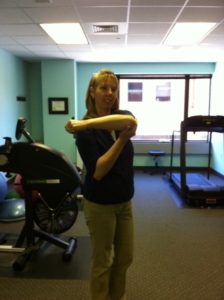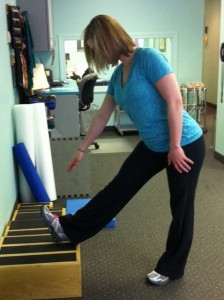Free weights include dumbbells, barbells, ankle weights, and pulleys. Free weights are used for a variety of exercises for the entire body. Exercising with free weights, allow you to perform weighted exercises in a functional motion. This not only strengthens the muscle you are contracting, it allows contraction of many different muscles to stabilize the motion. This is the main difference between using weight machines versus free weights. However, one needs to be careful using free weights because you are more likely to cause an injury due to the freedom of motion.
Machines at the gym provide more structure. Usually machines focus on one part of the body at a time and provide support for the rest of the body. This insures isolation of a muscle contraction at the specific muscle group. Generally they provide diagrams on each machine that tells you how to correctly perform each exercise.
Ideally, one should incorporate both free weights and machines into your workout as they are both beneficial. Please contact Harbor Physical Therapy for details on how to structure your workout with free weights and machines.


